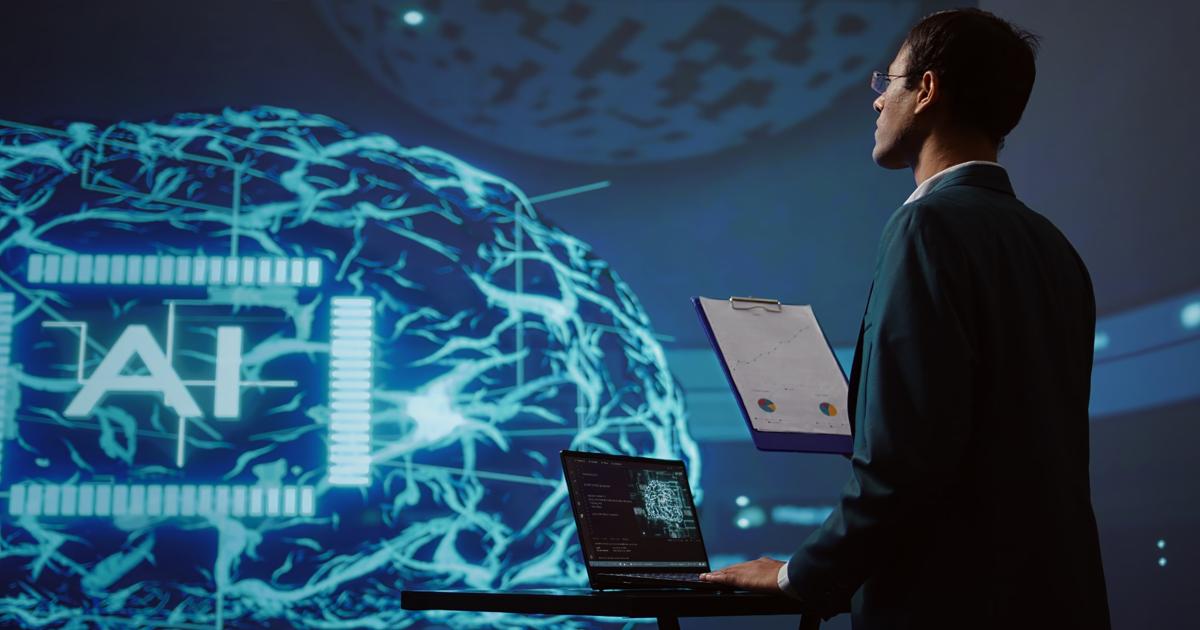Friday, October 13th 2023
Unveiling the Future: Can AI Identify Retention Risks?

In the dynamic realm of modern business, employee retention has emerged as a critical factor that directly impacts an organization's success. With the cost of replacing a departed employee skyrocketing, companies are turning to advanced solutions to identify potential retention risks. Artificial Intelligence (AI) has proven to be a game-changer in this endeavor, offering insights that were previously unimaginable. In this blog post, we'll explore the financial impact of employee turnover, emphasize the significance of retaining valuable employees, and delve into how AI can identify and address retention risks by measuring key factors like morale, employee engagement, and the overall workplace experience.
The Financial Toll of Employee Turnover
Employee turnover comes with a hefty price tag that extends far beyond recruitment costs. According to research, the cost of replacing an employee can range from 50% to 200% of their annual salary. These costs include recruitment expenses, training new employees, reduced productivity during the learning curve, and the potential loss of institutional knowledge.
The Critical Role of Employee Retention
Maintaining a productive and cohesive workforce is pivotal for a company's success. Losing skilled and experienced employees not only incurs financial losses but also disrupts team dynamics and company culture. High employee turnover can lead to decreased productivity, increased stress among remaining employees, and even affect customer satisfaction. Valued employees contribute not only to their individual roles but also to fostering a positive work environment and driving innovation.
AI as a Retention Risk Identifier
AI has introduced a new era of data-driven decision-making, and it's transforming the way companies approach employee retention. By harnessing the power of AI based tools like TruPulse, HR teams can measure and analyze various factors that contribute to retention risks, enabling them to take proactive measures to retain top talent.
Measuring Morale: AI tools can monitor employee sentiments, interactions, and communication patterns. A decline in morale, often reflected in negative sentiments, increased conflict, or decreased collaboration, can serve as an early warning sign of retention risks.
Evaluating Employee Engagement: AI can track engagement metrics, such as participation in company initiatives, project involvement, and enthusiasm levels. A sudden drop in engagement can indicate that employees are disengaging from their work and may be considering other opportunities.
Analyzing The Workplace Experience: AI-powered platforms can collect and analyze data related to the overall workplace experience. By measuring factors like work-life balance, career development opportunities, and the effectiveness of management, AI can highlight areas of concern that might contribute to retention risks.
The AI Advantage: Data-Driven Insights
AI's ability to process and analyze vast amounts of data provides HR teams with a competitive edge when it comes to identifying retention risks. Traditional methods often rely on manual surveys and subjective assessments, which might not capture real-time dynamics accurately. AI-driven analysis offers:
1. Real-Time Monitoring: AI platforms can provide real-time insights into employee sentiments and engagement levels, allowing HR teams to detect potential retention risks as they arise, rather than after they've escalated.
2. Objective Measurements: AI eliminates the potential bias that can creep into human evaluations. By relying on objective data, organizations can make more informed decisions about retention strategies.
3. Actionable Insights: AI doesn't just identify risks; it also offers actionable insights. It can pinpoint specific areas that require attention, allowing HR teams to tailor interventions to address the unique needs of different employee segments.
Crafting a Retention Strategy with AI Insights
Once AI has identified retention risks, the next step is to craft a targeted strategy to mitigate these risks and retain valuable employees.
Personalized Interventions: AI insights enable HR teams to create personalized interventions for employees at risk of leaving. This might involve providing additional development opportunities, adjusting workloads, or enhancing benefits packages.
Leadership Training: If AI detects that management issues are contributing to retention risks, HR can provide targeted leadership training to address these concerns and improve employee-manager relationships.
Cultivating Company Culture: AI can shed light on cultural aspects that impact retention. By understanding the elements of the company culture that resonate with employees, organizations can foster a more inclusive and positive environment.
AI Is the Tool to Help HR Teams Identify Retention Risks
The impact of employee turnover on an organization's financial health and overall productivity cannot be underestimated. Retaining valued employees is not just a goal—it's a necessity for sustained success. As AI continues to shape the business landscape, its role in identifying retention risks has proven invaluable. Using AI based people analytics tools like TruPulse to measure morale, engagement, and the workplace experience, empowers HR teams to detect issues early, allowing them to take timely and informed action. Organizations that embrace AI's capabilities in this realm will undoubtedly have a competitive advantage in retaining top talent, fostering a thriving work environment, and achieving long-term success.
Recent blog posts


